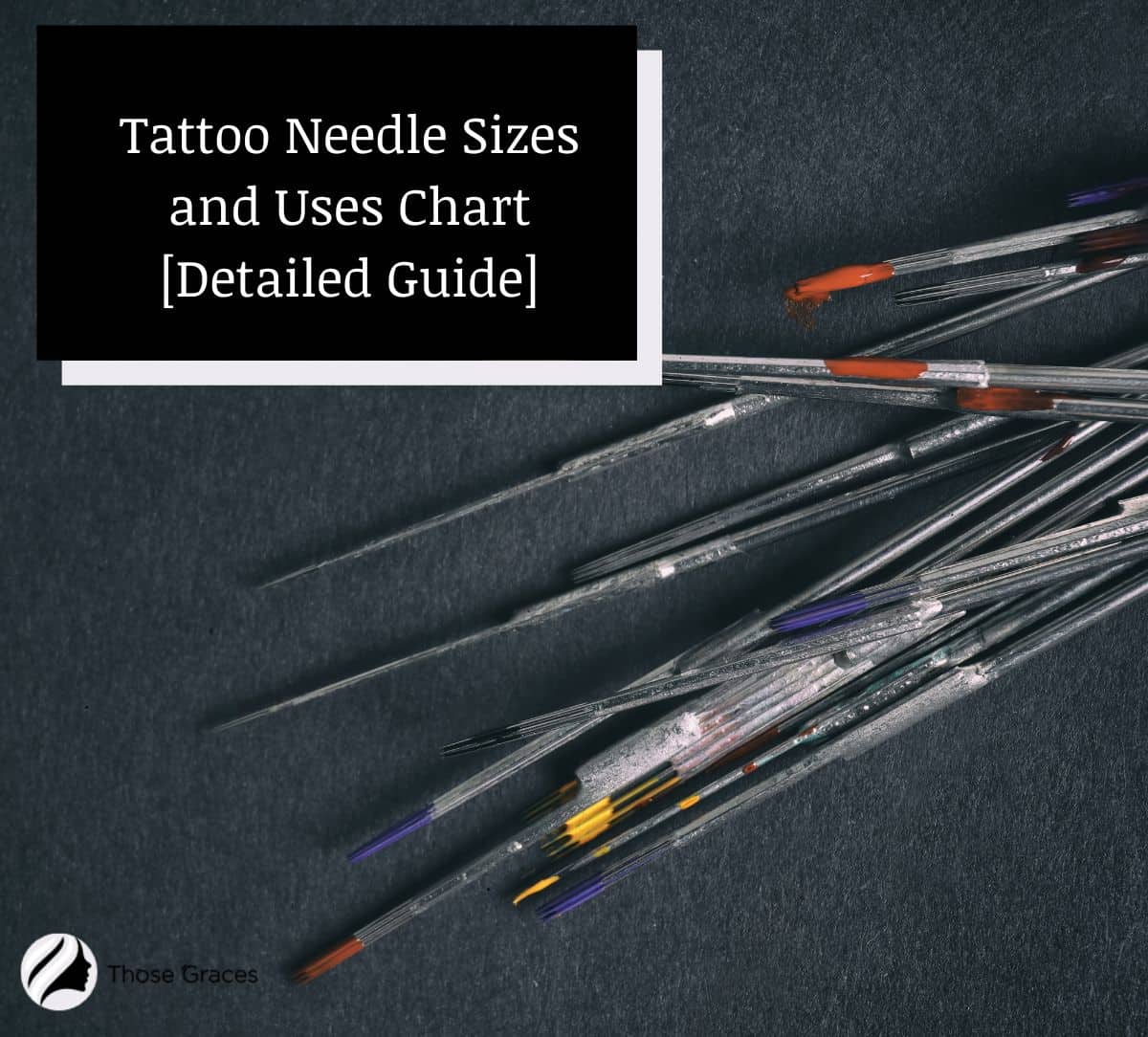Table of Contents
Understanding Tattoo Needle Sizes and Their Uses: A Comprehensive Guide for Professional Artists
As a professional tattoo artist, mastering the intricacies of tattoo needle sizes and their applications is essential for achieving optimal results. The choice of needle size and type directly impacts the quality of your work, whether you’re outlining, shading, or filling in colors. Each needle size serves a specific purpose, making it crucial to select the right one for every tattoo project.
Common Tattoo Needle Sizes and Their Applications
This guide will provide an overview of the most commonly used needle sizes, their functions, and tips for selecting the appropriate tools for your artistic needs.
1. Tattoo Needle Diameters
The diameter of a tattoo needle significantly influences ink flow and the overall outcome of your work. Here are the most common sizes:
- 0.25mm (#08): Known as Bugpins, these smaller needles are ideal for intricate detailing and provide a slower ink flow, perfect for meticulous designs.
- 0.30mm (#10): Often referred to as Double Zeroes, this versatile size is suitable for various tattoo styles, offering a balanced ink flow for general coverage.
- 0.35mm (#12): Commonly called Standards, these needles deliver a faster ink flow, making them excellent for bold lines and shading larger areas.
2. Needle Grouping and Count
The grouping of needles affects the texture and appearance of the tattoo:
- Round Liners (RL): Perfect for clean outlines and intricate details.
- Round Shaders (RS): Designed for shading and color packing in tight areas.
- Flat Shaders (F): Ideal for creating precise lines and even color saturation.
- Magnum Needles (M): Excellent for shading larger areas due to their efficient ink transfer capabilities.
3. Taper Lengths
Taper lengths determine how the needle transitions from the shaft to the point:
- Standard Taper: Commonly used for outlining; creates thicker lines.
- Long Taper: Suitable for shading and detailed work; produces finer lines.
- Extra Long Taper: Best for delicate portrait work or multiple passes.
Why Choosing the Right Needle Matters
Selecting the appropriate needle size and type is crucial for achieving your desired artistic effects while minimizing skin trauma. Larger needles with shorter tapers cover more area quickly but can cause more skin damage if used excessively. Conversely, smaller needles with longer tapers are ideal for detailed work but may require multiple passes to achieve desired saturation.
Understanding tattoo needle sizes, diameters, groupings, and taper lengths is vital for any professional tattoo artist. By mastering these elements, you can enhance your skills, improve your artistry, and ensure client satisfaction. Always refer to this guide when preparing for your next tattoo session to ensure you’re using the right tools for the job.For more in-depth information on specific needle sizes and their uses, explore our comprehensive chart below!
| Needle Grouping | Tube Size | Common Uses |
|---|---|---|
| 4F – 7F | 4 – 7 flat | Lines, detail work, shading, thick lines |
| 9F | 8 – 9 flat | Shading and color fill |
| 5M1 – 15M1 | 5 – 15 flat | Thick lines, outlines, color fill |
| 1RL – 14RL | 1 – 14 round | Lines, thick outlines, intricate shading |
| 3RS – 14RS | 1 – 14 round | Small shading areas, color fill |
Tattoo needles come in various sizes and have many uses, from outlining to shading and filling in colors or doing cosmetic work.
Knowing the correct needle size for the job is essential to creating quality tattoos that will last.
When choosing a needle size, there are factors to consider, such as the type of work to do, the tattooed skin, and the desired result.
By utilizing this guide effectively, you can elevate your tattoo artistry to new heights!
More detailed information:
7 Types of Needles Used for Tattooing
To start this comprehensive guide on tattoo needle sizes and uses chart, one must understand the types of needles used.
Here are the different types of tattoo needles:
1. Round Liner (RL)
Round liner needles create small, circular formations. They are most commonly used as lining needles.
These tattoo needles are designed to produce a crisp and clean line, making them ideal for OUTLINING tattoos.
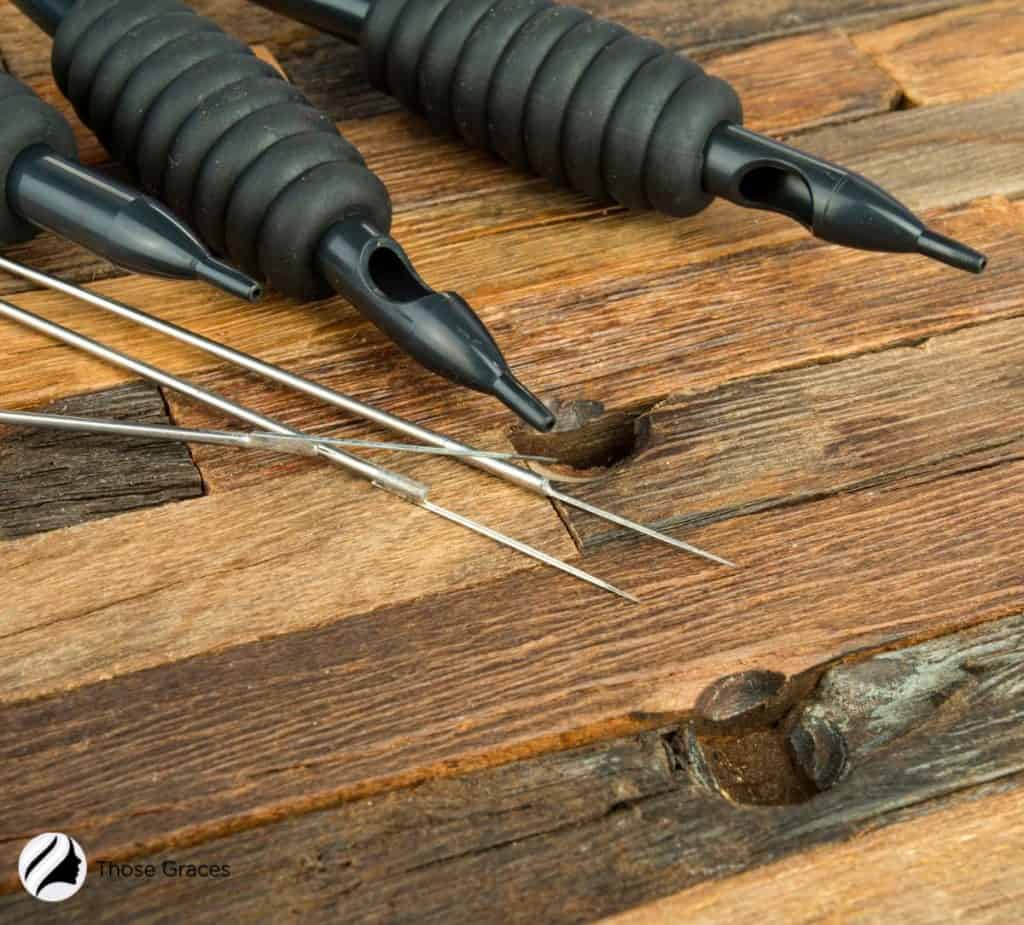
RLs come in VARIOUS sizes, ranging from 3 to 14, with each size having its designated purpose.
The SMALLER the number on the needle, the THINNER the line it will create; conversely, larger numbers will result in thicker lines.
2. Round Shader (RS)
Tattoo artists primarily use round shader needles for SHADING and coloring tattoos. As the name implies, these tattoo needles come in a round shape, with multiple needles of varying sizes grouped on a bar.
Unlike round liner needles, they’re NOT designed to create sharp lines, but to fill areas with color or shading.
The SIZE of the needle determines how thick the line will be. Smaller numbers between 5 to 8 result in thinner lines, while larger numbers between 9 to 14 will produce thicker lines.
It’s important to note that round shaders should NEVER be used for outlining as they won’t produce crisp edges.
3. Flat Shader (FS)
Flat tattoo needles are a variation of round shader needles used for the same purpose: shading and coloring.
They have the same size range as round shaders but with MORE groups of tattoo needles on each needle bar, allowing for smoother coverage.
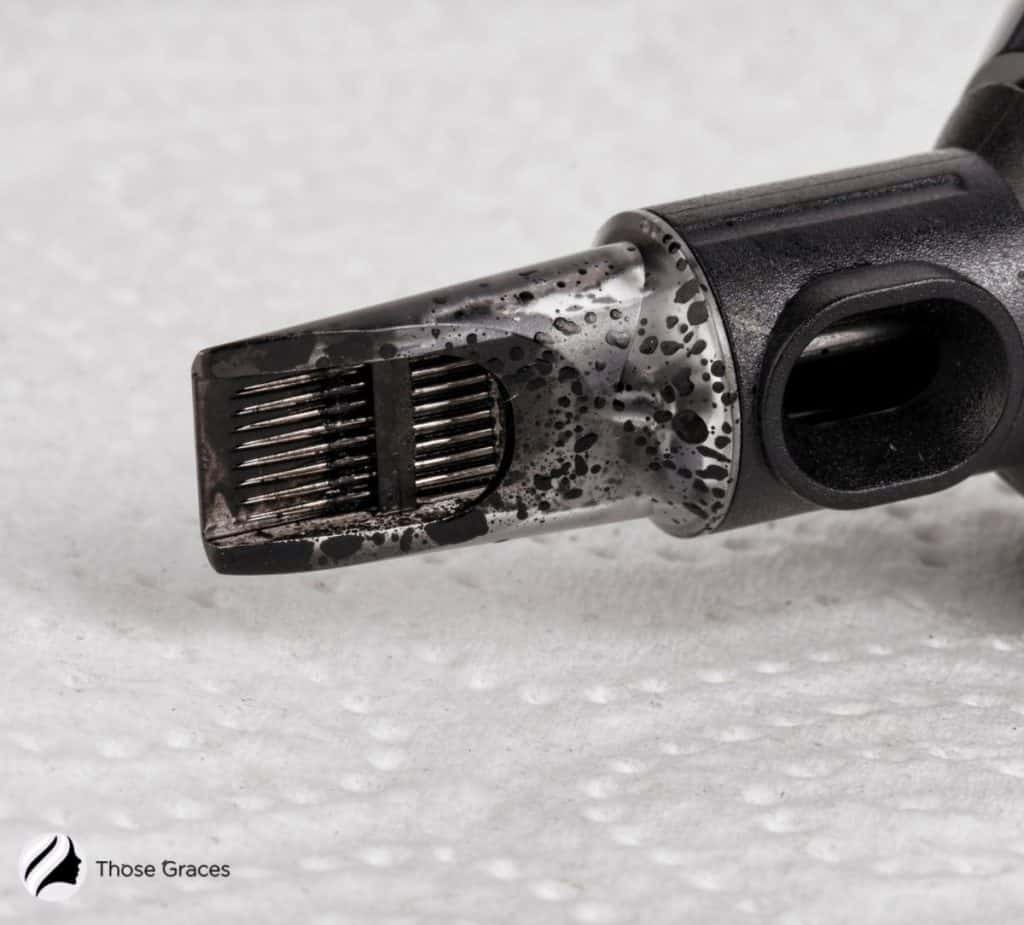
Unlike round shaders, flat needles allow for SMOOTHER gradients in shading as they apply less pressure to the skin. The downside is that they take longer to apply because of their larger size.
You can also use flat needles for outlining tattoos if you need a thicker line than the one a round liner will produce.
But it’s important to note that these needles are not designed for this purpose and should only be used when NECESSARY.
Pro Tip: Tattoo artists should always start with a round liner needle when outlining and then switch to a flat shader if they need thicker lines.
4. Magnum (M1)
Magnum needles are shader needles designed to fill larger areas more QUICKLY than standard shaders. (1) They comprise 2 rows of needles, with each row having 5 to 7 smaller needles grouped on a bar.
These tattoo needles produce thicker lines than round shaders or even flat needles and can be used for shading and coloring but also for outlining tattoos if you need a thicker line.
Magnum needles offer GREATER coverage and are perfect for creating bolder, more vibrant tattoos. They come in sizes from 7 to 14, with the higher numbers producing thicker lines.
5. Bugpin
Bugpin needles are a special type used mainly for creating fine details and LINEWORK on tattoos. They come in sizes from 0 to 5, with the lower numbers producing thinner lines than regular needles.
These tattoo needles are great for outlining and creating delicate, intricate details as they apply LESS pressure to the skin than standard needles, resulting in smoother edges and more precision.
You can also use them for shading if you need a finer line than what a magnum or round shader can produce.
6. Curved Magnum Shader Needle
Curved magnum shader needles are designed to provide GREATER control when shading and coloring tattoos. They consist of rows of 5-7 needles, each row curved in a U shape.
This allows the artist to shade or fill in an area more EVENLY than regular magnum tattoo needles, resulting in smoother gradients and transitions. They come in sizes from 7 to 14, with higher numbers producing thicker lines.
These needles are great for larger areas such as chest pieces or full arm sleeves that require more coverage, but you can also use them for outlining tattoos if you need a thicker line than what a round liner can produce.
7. Double Stack Needles
Double-stack needles are specially designed for creating EXTREMELY precise linework and details.
They comprise 2 rows of needles stacked on top of each other, with each row having 5 to 7 smaller needles grouped on a needle bar.
These needles come in sizes from 0 to 6, with the lower numbers producing thinner lines than regular tattoo needles.
They can outline tattoos and create delicate details and fine line work that requires precision and accuracy.
The double stack configuration also REDUCES skin trauma, making them perfect for intricate designs.
Pro Tip: When starting, it is best to try different tattoo needles to find the one that works for your style and technique.
4 Types of Needle Diameters Used in Tattoos
The 4 most common types of needle diameters used for tattoos are as follows.
- 8 or 0.25 mm is used for outlining and precise details.
- 10 or 0.30 mm is used for outlining, shading, and filling in colors.
- 12 or 0.35 mm is primarily used for shader needles and cover-up work.
- 14 or 0.40 mm is used for mag shading, coloring, and bold outlines.
Needle Counts and Groupings Used in Tattooing
The needle count and grouping used in tattooing refers to the NUMBER of needles on a bar. Most standard shader or liner needles will have 2 to 3 needles, while magnum needles typically have 5 to 7.
Double stack needles will usually have 4 to 6 small needles grouped for increased control when creating intricate details.
Pro Tip: Start with the smaller needle sizes and increase the size as needed.
Needle Codes and Their Meanings
Besides the needle size and count, tattoo needles are also CODED to indicate their type.
- RL stands for round liner.
- RS stands for round shader.
- F stands for flat.
- M1–M8 stand for magnum (with the number after the M indicating the size).
- DS stands for double stack.
- RM stands for curved or round magnum.
Check the table below to find out the best tattoo needle type for you.
What Is Taper?
Taper refers to the SHAPE of the needle. It is measured in millimeters and indicates how pointed or flattened a needle is at the tip.
A rounded taper will have a more blunted tip, while a sharper taper will have a more pointed tip. Sharper tapers are usually used for outlining, while blunted tapers are best for shading.
Configuration and Arrangement of Tattoo Needles
The configuration and arrangement of needles refer to the PATTERN in which the needles are arranged on a bar.
Most standard tattoo needles will be aligned horizontally or diagonally, while double-stack needles may have 2 rows of smaller needles stacked together for increased precision.
Pro Tip: Don’t forget to sanitize your tattoo needles after every use.
For a beginner tattoo artist, I would suggest you check our guide on choosing the best type of tattoo machine for beginners, so you can find the right machine for practicing.
How To Choose The Right Tattoo Needle Size?
Choosing the right needle size for your tattoo is essential for creating a QUALITY design that will last. Check out the guide below to understand which needle type and size are best for the job.
1. Outlining
To outline, you will want to use a needle size between 8 and 14. Smaller sizes, such as 8 or 10, are great for fine details, while larger sizes, like 12 or 14, are better for bold outlines.
2. Shading
For shading, use tattoo needles between 10 to 14. Smaller needles in the 10 to 12 range will give you more control when shading, while larger sizes can cover larger areas.
3. Coloring
For coloring, use needles between 14 and 18. These are great for filling in large areas or creating smooth gradients.
4. Magnums
Magnums are best used for shading and coloring. They come in sizes ranging from 12 to 18 and can be used for larger areas of color or coverage.
5. Double-stack
Double-stack needles are best used for detailing and precision work. They come in sizes ranging from 0 to 6, with smaller sizes great for outlines and fine details, while larger needles can be used for shading and color filling.
This table will help you find the right tattoo needle size.
| Needle Type | Needle Size | Uses |
| Outlining | 8–14 | Outlining, fine details, and bold outlines. |
| Shading | 10–14 | Shading, covering larger areas. |
| Coloring | 14–18 | Filling in large areas, gradients. |
| Magnums | 12–18 | Shading, coloring, coverage. |
| Double-stack | 0–6 | Detailing, precision work. |
Factors to Consider When Choosing a Tattoo Needle
First, you’ll want to determine what KIND of tattoo you’re creating. Different needle sizes and types are designed for different tattoos and can create vastly different results.
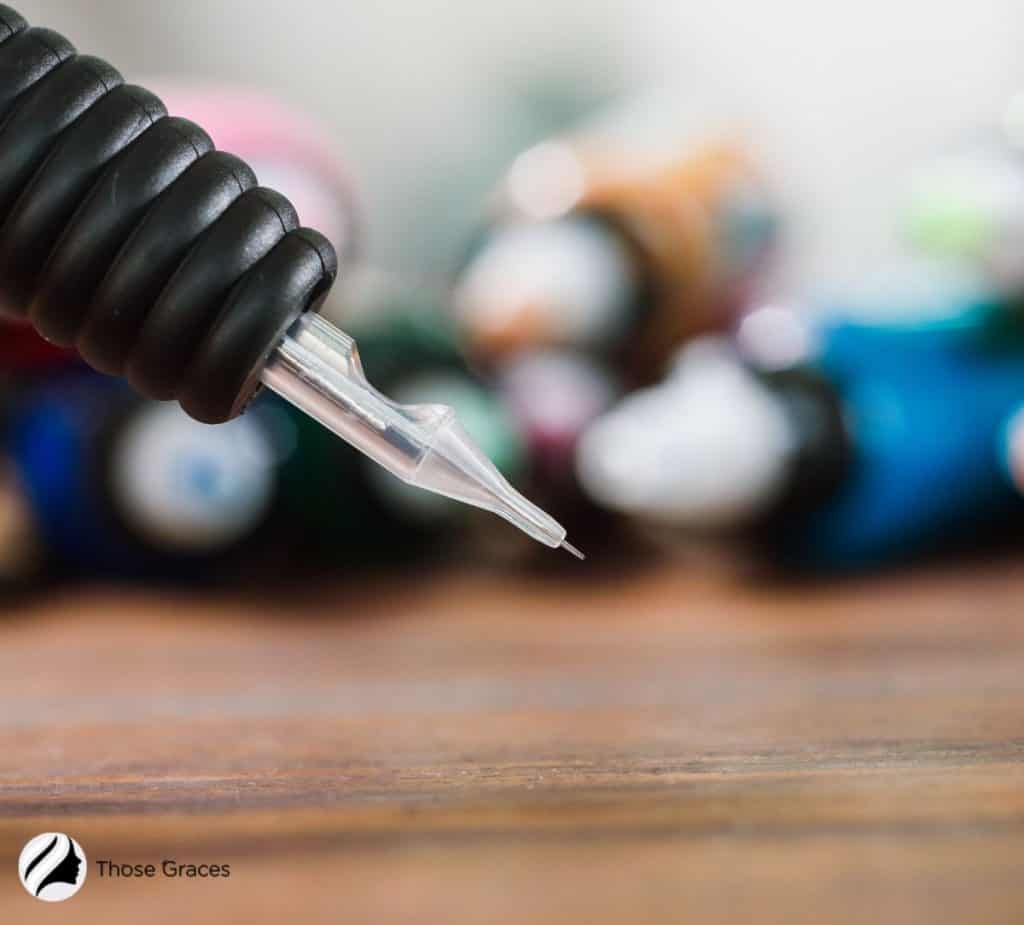
The SIZE of the tattoo needle also matters, as smaller needles are best used for detailed work, and larger ones are better suited for shading and filling in colors.
You should also consider the SKIN type of your client. If the skin is thicker, you may need to use a larger tattoo needle to penetrate it. If the skin is thin and delicate, you’ll want to use a finer needle to avoid damaging it.
Finally, consider your STYLE of tattooing. Some artists prefer particular needles for certain types of tattoos and techniques, so finding the tattoo needle that works best for you is essential.
Also, don’t forget to check our guide on tattoo machine types.
FAQs
What Size Of Tattoo Needle Is Best For Shading?
What Size Of Tattoo Needle Is Best For Detail Work?
Can I Use The Same Size Needle For Outlining, Shading, And Coloring?
What Size Of Needle Should Be Used For Larger Tattoos?
Are There Any Special Considerations For Tattooing Sensitive Skin?
Conclusion
Now that you know more about how a tattoo needle sizes and uses charts, you can choose the right needle for your next project.
Remember to match the size and use of the needle to the style of the tattoo you want to create.
Practice makes perfect, so experiment with different types of needles until you find the one that works best for you.
Key Takeaways
- Tattoo needles come in various sizes and have many uses, from outlining to shading and filling in colors or doing cosmetic work.
- Knowing the correct needle size for the job is essential to creating quality tattoos that will last.
- When choosing a needle size, there are factors to consider, such as the type of work to do, the tattooed skin, and the desired result.
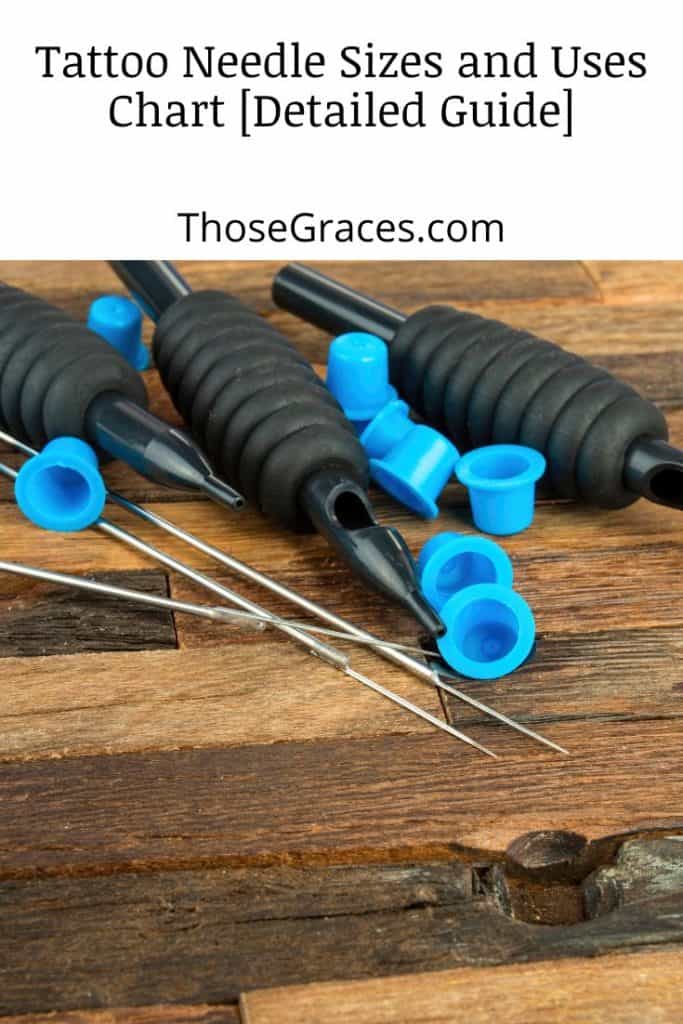
So, did you find the guide helpful? Let us know in the comments section!
References
- 1. Rosenkilde F. Tattoo Machines, Needles and Utilities. Tattooed Skin and Health [Internet]. 2015 [cited 2022 Mar 8];48:21–30. Available from: https://www.karger.com/Article/FullText/369177
